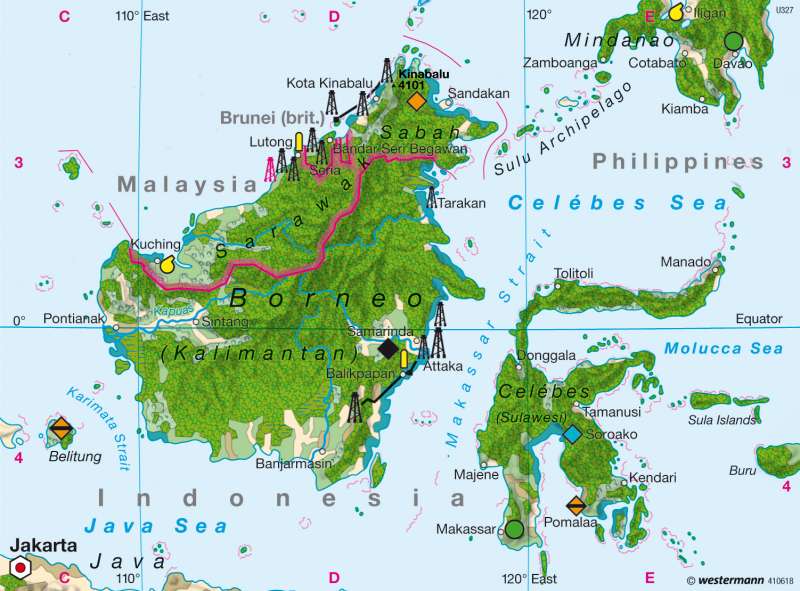Borneo 1980 — Economy
South-East Asia - Economy
978-3-14-100790-9 | Page 115 | Ill. 2

Information
Large parts of Southeast Asia are still covered by rain forest, but its size is increasingly in decline. The consequences of mass deforestation are mostly visable in Sumatra, Thailand and the Philippines: on arable land, partly on irrigated land and secondary forest covering large areas. (The map display strongly generalises in this regard, as the small-scale mosaic of land use cannot be fully depicted and is in constant flux). Remnants of primary forests are only connected in inaccessible areas. Thailand and the Philippines have now even started to import wood. Logging for industry and clearing for agriculture are the main causes of forest decline with settlements of people following the development of roads for the timber industry. The exploitation of forests is particularly good on Borneo paths (forest aisles).In the 1960s and 70s, firstly in the Philippines and Thailand and later in Malaysia and Indonesia, there were generous allocations of logging concessions. As a result, companies from the U.S., Japan, South Korea, Australia and Europe profited. In Southeast Asian countries, the demand for cheap tropical timber provided an opportunity to raise much-needed foreign exchange.
C. F. Zimmermann, G. R. Zimmermann, Ü: Colette Fleming




